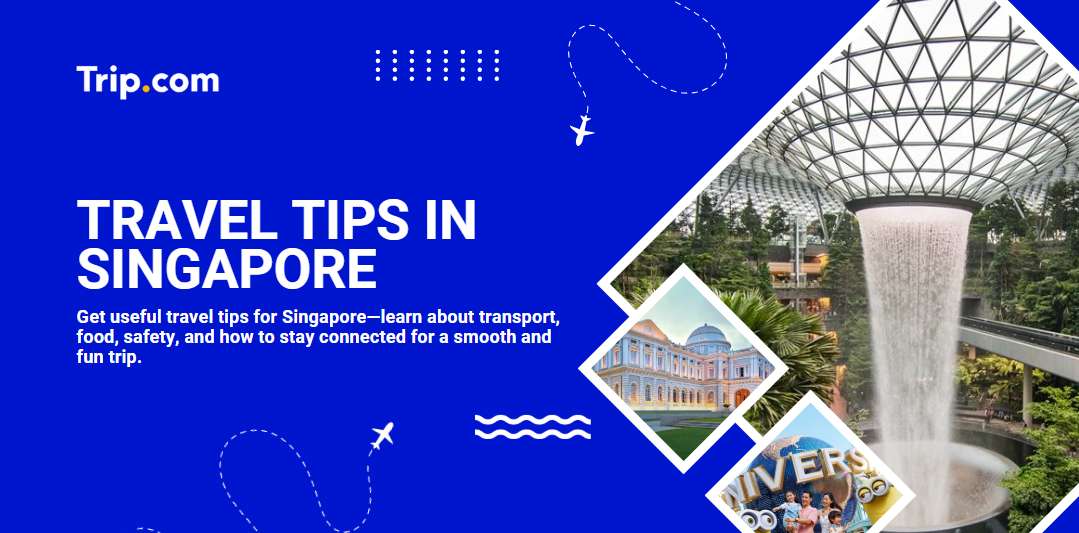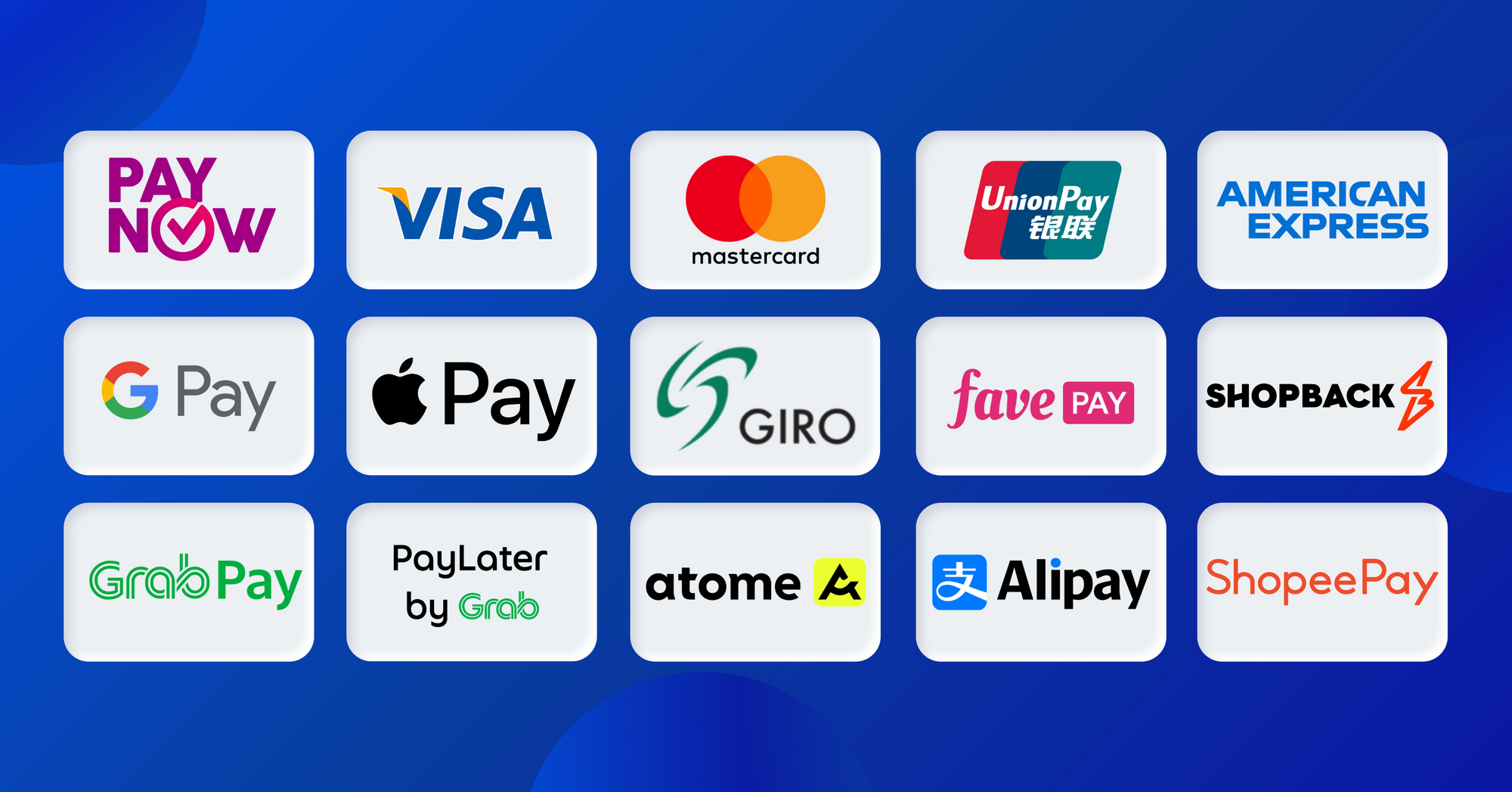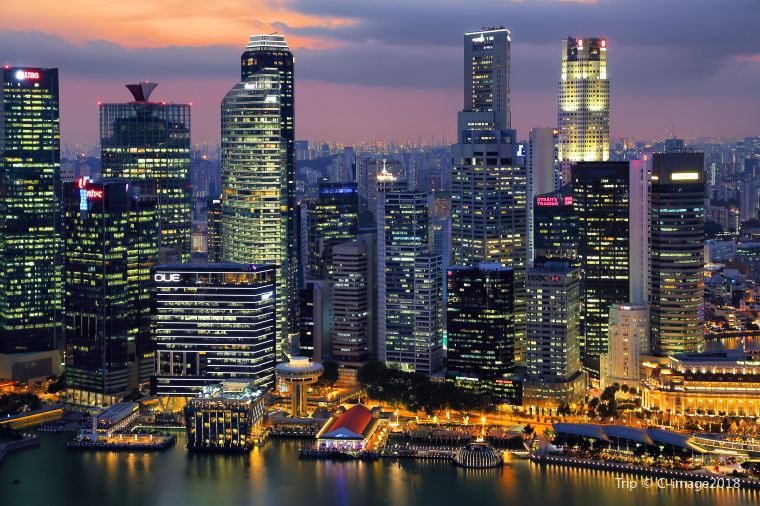
Planning a trip to Singapore? You’re in for a treat! From tasty local food like laksa and chicken rice 🍜 to shopping malls 🛍️ and clean, high-tech streets 🚇, it’s a favorite for many travelers. It’s safe, easy to explore, and full of fun things to do. Even if you’ve traveled a lot, Singapore has its own style. You don’t need to tip 💵, public transport is super smooth 🚌🚇, and locals have little habits like using tissue packs to “reserve” tables. Handy apps 📱 can help with food, transport, and directions.
In this guide, you’ll find helpful tips on using money 💳, how to get around, local manners 🙏, and how to stay connected 📶. Whether you're looking for cheap flights to Singapore ✈️ or comfy hotels in Singapore 🏨, we’ll help you get ready.
Enjoy promo exclusive for new users with 8% discount!
📱 Stay Connected in Singapore
Singapore eSIM starting from Rp 4,452
🙋 Must-Visit Attractions in Singapore
Universal Studios Ticket! Starting from Rp 955,483
Gardens By the Bay Ticket! Starting from Rp 384,675
Night Safari Ticket! Starting from Rp 1,364,975
S.E.A Aquarium Ticket! Starting from Rp 508,674
🗣️ Language & Communication Tips in Singapore

(Source: chiamhuiy.com)
Heading to Singapore and curious about the language barrier? Great news — you won’t have much trouble! 🙌 Singapore is one of the easiest places in Asia to travel without speaking the local languages fluently, especially if you speak English. Still, knowing a few local phrases and cultural habits can make your trip smoother and more fun. Let’s break it down:
✅ General Language Environment
Singapore has four official languages:
English (main working language)
Mandarin Chinese
Malay (national language)
Tamil
You’ll find English spoken almost everywhere — on signs, menus, public transport announcements, and by most locals, especially in the city. Many Singaporeans are bilingual or trilingual, switching between English, Mandarin, Malay, Tamil, or Singlish (a fun mix of English + local slang). In suburban or hawker areas, older folks may speak more in dialects like Hokkien or Cantonese, but gestures and smiles go a long way 😊
📱 Translation Apps That Help
Google Translate – Great for Mandarin, Malay, Tamil (has offline mode too!)
Papago – Good alternative for Asian languages
Waygo – Handy for scanning Chinese menus (offline available)
Grab App – Most locals use Grab for taxis + food; it helps avoid language barriers entirely 🚗🍔
💡 Tip: Download offline packs for Mandarin/Malay just in case you're in low signal areas like nature parks or MRT tunnels.
🙋♀️ Communication Style in Singapore
Singaporeans are generally friendly but practical and to-the-point when speaking. You may find locals a bit direct compared to other Southeast Asian countries, but it’s not rude—it’s just efficient.
Singlish adds flair to conversations. Words like lah, lor, and can can! are common. No pressure to use them, but you’ll hear them a lot!
🗣️ Common Phrases You Might Hear (or Want to Try!)
English Phrase | Local Language (Mandarin/Malay) | Romanization / Pronunciation | When to Use |
Hello | 你好 / Hai | Nǐ hǎo / Hai | To greet politely |
Thank you | 谢谢 (Mandarin) / Terima kasih | Xièxiè / Te-ree-ma ka-seeh | After receiving help or service |
Where is the toilet? | 厕所在哪里?/ Di mana tandas? | Cèsuǒ zài nǎlǐ? / Dee mah-nah tan-das? | Asking for a restroom |
I don’t understand | 我听不懂 (Mandarin) / Saya tak faham? | Wǒ tīng bù dǒng / Sah-yah tak fah-ham | If someone speaks a dialect |
How much is this? | 这个多少钱?/ Berapa harganya? | Zhège duōshǎo qián? / Buh-rah-pah har-gah-nya | When shopping |
No spicy please | 不要辣 (Mandarin) / Tak pedas | Bù yào là / Tak peh-das | At food stalls if you can’t eat spicy |
Yes / No | 是 / 不是 / Ya / Tidak | Shì / Bù shì / Yah / Tee-dak | In basic yes/no situations |
Delicious! | 好吃!/ Sedap! | Hǎo chī! / Seh-dap | Complimenting food at a hawker stall |
💡Final Tip for Smooth Communication
Screenshot your hotel name & address in Mandarin and Malay just in case you need to show it to a taxi uncle or ask for help. Some restaurants or hawkers might not speak much English, so pointing to menu items, using numbers, or showing a translated phrase on your phone always works well.
💳 Payment Methods & Popular Apps in Singapore

(Source: blog.hitpayapp.com)
✅ Cash, Card, or Mobile Payment?
💳 Credit & Debit Cards: Widely accepted, especially Visa and Mastercard. You can use your card in most restaurants, shops, hotels, and even at MRT ticket machines.
💵 Cash: Still useful at hawker centres, mom-and-pop shops, or some food stalls that don’t accept cards. Best to carry small bills for these.
📱 Mobile Payments: Super common. Locals use PayNow, GrabPay, and NETS QR, but international wallets like Apple Pay, Google Pay, and Samsung Pay also work almost everywhere that accepts cards.
💡 Tip: Small stalls may not accept cards or foreign e-wallets—always keep a little cash handy.
✅ Mobile Wallets & Local Apps
Here’s what’s commonly used in Singapore:
App Type | App Name | Notes / Use Case |
E-Wallet | GrabPay | Linked to the Grab app; accepted at many shops, cafes, and hawker stalls |
E-Wallet | NETS QR | Popular local QR-based payment (not for tourists) |
Contactless | Apple Pay / Google Pay / Samsung Pay | Accepted anywhere with contactless terminals |
Ride-Hailing | Grab | The go-to app for taxis and car rides 🚗 |
Transport | TransitLink SimplyGo | Use your card/phone to tap for buses & MRT 💳 |
Delivery | GrabFood / Foodpanda | Order food from hawkers to fine dining 🍱 |
Navigation | Google Maps / CityMapper | MRT, bus, and walking routes 🗺️ |
Messaging | WhatsApp / Telegram | Commonly used for communication and customer service 💬 |
🛑 Most local wallets like NETS and PayNow are tied to Singapore bank accounts, so tourists can't register.
✅ ATMs & Currency Exchange
- ATM withdrawals are easy and safe across the city. Look for machines at banks or malls. Most accept international cards (Cirrus, Plus, etc.)
- ATM fees vary by your home bank, but local ATMs usually charge SGD 5–7 per withdrawal.
- Money changers offer better exchange rates than airport counters. Popular spots: Mustafa Centre, Lucky Plaza, and Chinatown.
💡 Avoid exchanging large amounts at Changi Airport unless urgent—rates tend to be lower.
✅ Pro Tips Before You Go
✔️ Download key apps like Grab and Google Maps before arrival — it’s easier on Wi-Fi and saves time on SIM registration.
✔️ Tourist eSIMs or SIM cards from Trip.com or Airalo often include Grab vouchers or local discounts.
✔️ Keep SGD 10–20 in small notes for food courts or places without card readers — not everyone takes PayWave at hawker stalls.
Hotel Recommendations in Singapore
💵 Tipping & Service Etiquette in Singapore

If you’re traveling to Singapore, you’ll be happy to know that tipping isn’t expected, and in many cases, it’s not even necessary. 🙅♂️💰 Singapore has a strong service culture built around efficiency and fairness, and in most places, a service charge is already included in your bill. So if you’re coming from a country where tipping is the norm, don’t worry—you won’t offend anyone by skipping it here.
✅ Where and When to Tip (Or Not)
Service Type | Should You Tip? | Local Insight |
🏨 Hotels | Not expected. You can give SGD 2–5 to bell staff or housekeeping if you’d like. | Totally optional—appreciated but not required. |
🍽️ Restaurants | No need. A 10% service charge is usually already added to your bill. | No need to add more unless it’s a very fancy place. |
🚕 Taxis / Grab | Not expected. Rounding up is fine if you want. | Grab doesn't allow tipping in the app, but a smile goes far |
💇♀️ Salons / Spas | Not expected. You can tip SGD 2–5 if service was exceptional. | Most locals don’t tip, but no harm if you do. |
💰 How to Tip (If You Want To)
- Cash is king if you choose to tip. Hand it directly to the staff with a smile 😊.
- No need for envelopes or coins—bills are better.
- Tipping digitally via Grab or PayNow is not common or expected.
🙏 Cultural Notes
- Most Singaporeans don’t expect tips and may even politely refuse them. That’s just how things work here. It’s not personal!
- Tipping with coins, especially small denominations, can feel impersonal, stick to small notes if you really want to give a tip.
✅ Pro Tips to Remember
✔️ If your bill includes “++”, it means there’s already 10% service charge + 9% GST—you’re covered.
✔️ Still want to show appreciation? A simple “thank you” or a kind review goes a long way.
✔️ Not sure? Rounding up a little or tipping SGD 2–5 is more than enough in most places.
🛡️ Safety & Emergency Info in Singapore

Good news — Singapore is one of the safest countries in the world. Crime rates are very low, and both locals and tourists often feel comfortable walking around, even late at night 🌙. You’ll notice clean streets, organized public spaces, and visible law enforcement. That said, just like anywhere, it’s still smart to stay alert. While violent crime is extremely rare, minor issues like pickpocketing can happen in busy areas or public transport—though it’s uncommon.
🛡️ Top Safety Tips for Singapore Travelers
👜 Keep an eye on your belongings in busy places like MRT stations, Bugis Street, or Orchard Road.
🚕 Use official taxis or ride-hailing apps like Grab—easy, reliable, and safe.
💳 Don’t flash valuables or large amounts of cash—Singapore is safe, but better safe than sorry.
🔌 Respect local laws—Singapore has strict rules (like no littering or chewing gum in public), so follow signage and stay informed.
☎️ Emergency Contacts in Singapore
Emergency Type | Local Number | Notes |
👮 Police | 999 | For theft, lost items, or suspicious activity |
🚑 Ambulance | 995 | For medical emergencies; fast response |
🚒 Fire | 995 | Also handled by Civil Defence Force |
☎️ Tourist Helpline | +65 1800 736 2000 | English-speaking support by Singapore Tourism Board |
📞 You can dial these numbers from any local phone or SIM (no area code needed).
🏥 Medical Access & Pharmacies
Singapore has excellent hospitals and clinics, many of which are private and speak fluent English.
Pharmacies (like Guardian or Watsons) are everywhere—in malls, MRT stations, and central areas.
Bring basic medications (painkillers, fever meds, motion sickness tablets) to save time or avoid confusion.
Local Insight: Helpful & Harmonious
Singaporeans are generally polite and helpful—especially if you ask nicely 😊. If you're lost, don’t be shy to approach MRT staff, hotel security, or shop assistants. Public arguments are rare; people value peace, order, and courtesy.
🙏 Cultural Etiquette & Local Customs in Singapore

(Source: kaizenaire.com)
Singapore is a diverse, modern, and multicultural country where people from Chinese, Malay, Indian, and Western backgrounds live side by side. In public, most locals tend to be polite, orderly, and a bit reserved—especially in crowded spaces like MRT trains or elevators. You’ll notice that courtesy and cleanliness matter a lot, and people generally follow rules and respect each other’s space.
✅ Quick Do’s & Don’ts to Keep in Mind
✅ Do This | ❌ Avoid This |
Take off your shoes before entering someone’s home | Don’t speak loudly in public or on transport |
Use both hands to give or receive items | Don’t point with your finger—use your whole hand |
Stand in line and wait your turn patiently | Don’t litter or eat/drink on the MRT |
Respect religious spaces (e.g. mosques, temples) | Avoid public displays of affection |
Address elders respectfully with “Uncle” or “Auntie” (even if not related) | Don’t touch someone’s head—it’s considered impolite |
🍽️ Dining Etiquette in Singapore
- Meals are often shared in groups, especially in Chinese or Malay-style dining 🍲.
- It’s polite to wait until everyone is served before eating.
- You’ll find both chopsticks and cutlery depending on the place.
- No need to tip—10% service charge is already added.
- In halal or vegetarian eateries, be mindful of dietary rules.
👕 Dress Code & Body Language
- Singapore is generally casual, but dress modestly when visiting temples, mosques, or churches 🛕. Cover shoulders and knees.
- At beaches or parks, casual wear is fine—but no shirtless walking in malls or public transport.
- Avoid pointing with fingers or feet, and don’t beckon someone with your palm up—use your hand with fingers down instead ✋👇
🤝 How Locals Interact
- A polite “Hello” or nod is fine for most situations 👋.
- Handshakes are common in business settings; bowing is not part of local custom.
- Small talk is brief—locals tend to be friendly but practical, so don’t be surprised if they get straight to the point.
- Respect queues, speak calmly, and avoid confrontation in public—Singaporeans value harmony and order 🕊️.
🌟 A Note on Cultural Curiosity
Singaporeans truly appreciate it when visitors make an effort to be respectful—whether it’s learning how to say “Terima kasih” (Malay for thank you) or standing patiently in line. It’s these little things that show care and go a long way in making your trip feel even more special 😊.
📅 Public Holidays & Travel Seasons in Singapore

(Source: edwardmsanchez.pages.dev)
✅ Public Holiday Highlights
In Singapore, public holidays are celebrated across different cultures and religions, making for a lively calendar year! A few key ones to note:
Chinese New Year 🧧 (Jan–Feb): Expect citywide closures, busy temples, and high demand for hotels and flights.
Hari Raya Puasa 🌙 (End of Ramadan): Markets and streets in Geylang Serai and Kampong Glam light up with festive vibes.
National Day 🇸🇬 (August 9): Parades, fireworks, and patriotic displays take over Marina Bay—fun but very crowded.
🚦 Travel Impact & Local Tips
🏨 Hotels and flights fill up fast during major holidays—book early.
🚆 MRTs and buses get packed, especially around festival areas and shopping malls.
🚪 Some small businesses close, especially during Chinese New Year.
🛕 Cultural neighborhoods like Little India or Chinatown can be great for festive photos and food—if you don’t mind the crowds!
☀️ Seasonal Travel Summary
High season: June–August (school holidays) & December (Christmas/New Year travel)
Shoulder season: March–May and September–early November—less crowded, more deals
Low season: There’s no real "off-season," but wet months like November–January may bring daily showers ☔
📶 eSIM, Wi-Fi & Connectivity in Singapore

✅ eSIM vs Local SIM in Singapore
If your phone supports it, eSIM is the easiest choice for short-term travelers. You can activate it before you arrive, skip the airport kiosks, and get connected as soon as your plane touches down.
Prefer a physical SIM? You’ll still find affordable tourist SIM cards at the airport or 7-Eleven, but keep in mind you’ll need to show your passport for registration.
🔄 eSIM for Singapore is ideal if you want flexibility and zero setup hassle.
✅ Best SIM Providers
Singapore has excellent mobile coverage with fast 4G and growing 5G. Here are the top providers:
Provider | What They Offer | Notes |
Singtel | Best coverage | Reliable 4G/5G, solid prepaid options for tourists |
StarHub | 5G-ready SIMs & eSIMs | Great for tech-savvy travelers, tourist-friendly packages |
M1 | Budget-friendly plans | Good value and decent urban coverage |
✅ Where to Get It
✈️ Changi Airport arrival halls: Telco counters or vending machines
🏪 7-Eleven or Cheers: Physical SIM cards (bring your passport!)
💻 Trip.com’s eSIM for Singapore: Buy and activate before your flight for instant data access
✅ Wi-Fi & Internet Access
🏨 Hotels and cafes: Free and fast Wi-Fi is standard
🚇 Public transport: Wi-Fi available in MRT stations and some buses
🏛️ Public spaces: Look for Wireless@SG—a free nationwide hotspot network
🌐 No VPN needed — all major platforms like Google, WhatsApp, Instagram, and YouTube work perfectly in Singapore.
✅ Travel-Smart Tips
🗺️ Download offline maps and translation apps before arrival, just in case
🔌 Keep a power bank—you’ll be on your phone a lot!
🧳 Using Trip.com’s eSIM for Singapore? You’ll skip queues and stay connected from the moment you land
Enjoy promo exclusive for new users with 8% discount!
📱 Stay Connected in Singapore
Singapore eSIM starting from Rp 4,452
🙋 Must-Visit Attractions in Singapore
Universal Studios Ticket! Starting from Rp 955,483
Gardens By the Bay Ticket! Starting from Rp 384,675
Night Safari Ticket! Starting from Rp 1,364,975
S.E.A Aquarium Ticket! Starting from Rp 508,674
📝 Final Travel Tips for Singapore🧳

You’re all set for your trip to Singapore! With everything from transport tips to local customs and eSIM info, you can explore with ease and confidence. Small things—like knowing how to get around or when to tip—really help make your trip smoother.
Singapore may be small, but every area has something unique to offer. Whether it’s city views, culture, or quiet parks, there’s always something new to discover.
To plan even better, check out:
✈️ [flights to Singapore]
🏨 [hotels in Singapore]
📍 [Things to Do in Singapore]
Have a great trip and enjoy every moment! 🌟
FAQs: Travel Tips to Singapore
Do I need a visa to enter Singapore?
Visa requirements depend on your nationality. Many countries in Asia, Europe, and the Americas can enter visa-free for short stays. Always check with the official ICA Singapore website before you go.What’s the best way to get around?
The MRT (subway) is fast, clean, and easy to use. You can also use buses, Grab (ride-hailing app), or just walk in central areas. Buy an EZ-Link card or use contactless cards for MRT and busesIs Singapore expensive?
It can be, but there are budget-friendly options too! Try hawker food (cheap & tasty), use public transport, and book hotels in Singapore early for better rates.Should I tip in restaurants or hotels?
No tipping needed—a 10% service charge is usually added to bills. Tipping is not expected in taxis or most services either.Is tap water safe to drink?
Yes! 💧Singapore’s tap water is clean and safe to drink, even for tourists.What’s the best time to visit?
Singapore is warm and humid year-round 🌤️. February–April tends to be less rainy. Watch for higher prices during school holidays and major festivals like Chinese New Year


 NO.1
NO.1



